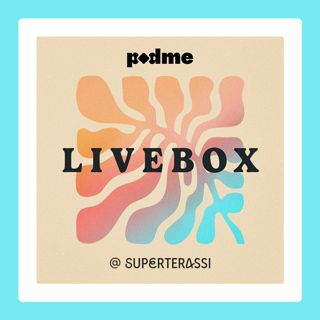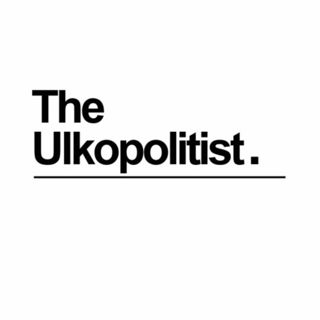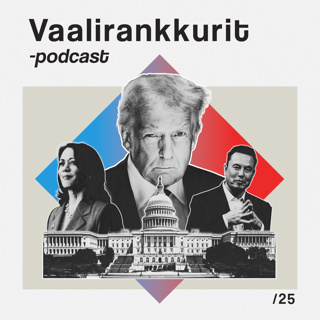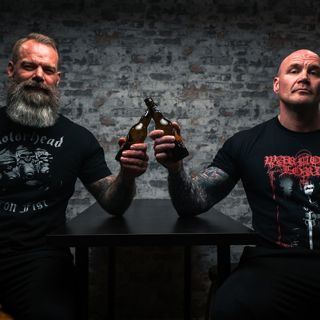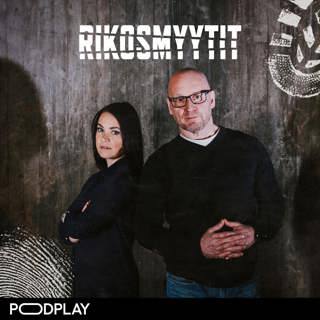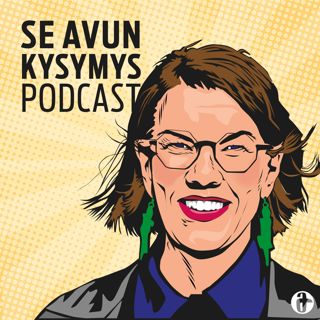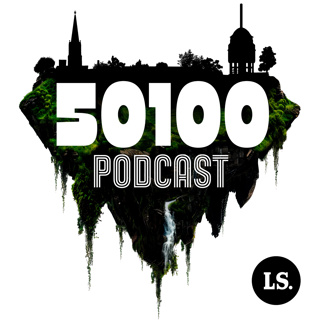
The Trump Plan to Flip Georgia Back
On Tuesday night, with three weeks to go until Election Day, Donald Trump was in Georgia.In 2020, he lost the state by around 12,000 votes, and Georgia became central to his claims that the election had been stolen. After his defeat, he went after Republican state officials and voting machines.At his rally on Tuesday, he was doing something different. He was encouraging people to vote early, to participate in a system his party had previously questioned.The plan was to make the results “too big to rig” — just one part of the Republican strategy to make sure last time doesn’t repeat itself.On today’s show, we take a closer look at the Trump ground game in Georgia and explore why Georgia Republicans are confident that 2024 won’t be like 2020. Subscribe today at nytimes.com/podcasts or on Apple Podcasts and Spotify. You can also subscribe via your favorite podcast app here https://www.nytimes.com/activate-access/audio?source=podcatcher. For more podcasts and narrated articles, download The New York Times app at nytimes.com/app.
17 Loka 20241h 31min

A Pollster’s Guide to the Homestretch
We are less than a month from Election Day.That means our polling colleagues are busy. And that they are well positioned to help answer some of the biggest questions we have at this stage in the race.Like: Who has the advantage between Kamala Harris and Donald Trump?What’s the most important battleground state?And what are the chances we actually know the final result on election night?On today’s show, we do our best to get answers — and to get ready for these next few weeks.Featured on today’s episode:Nate Cohn, the chief political analyst for The New York Times. Subscribe today at nytimes.com/podcasts or on Apple Podcasts and Spotify. You can also subscribe via your favorite podcast app here https://www.nytimes.com/activate-access/audio?source=podcatcher. For more podcasts and narrated articles, download The New York Times app at nytimes.com/app.
10 Loka 202442min
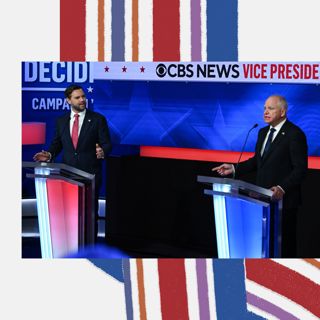
The Fight for Rural America
Tim Walz, a former high school football coach from a tiny town, has folksy sayings and a camo cap. JD Vance shot to fame with “Hillbilly Elegy,” aiming to speak for parts of rural America that felt left behind.Both parties — especially with their vice-presidential candidates — are trying to convey to rural Americans that they are not forgotten.This comes after Democrats have seen significant erosion of support in rural areas.How have Republicans grown their rural advantage to historic levels? Can Democrats do enough to remain competitive in 2024 — especially in places like Mr. Walz’s former congressional district?In the wake of the vice-presidential debate, The Run-Up looks at how both parties are trying to reach rural voters — with their vice-presidential candidates and their messages. Subscribe today at nytimes.com/podcasts or on Apple Podcasts and Spotify. You can also subscribe via your favorite podcast app here https://www.nytimes.com/activate-access/audio?source=podcatcher. For more podcasts and narrated articles, download The New York Times app at nytimes.com/app.
3 Loka 202451min
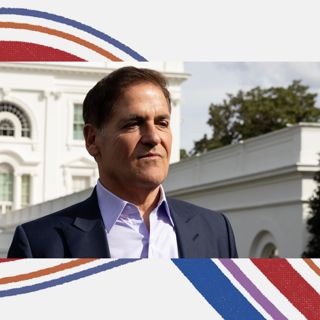
Mark Cuban on Why He's All In for Kamala Harris
At one point, he supported the presidential aspirations of Donald Trump, a fellow reality TV star and businessman.But now Mark Cuban — perhaps best known for his longtime ownership of the Dallas Mavericks and his perch as a “Shark Tank” shark — has taken on a surprising new role.He is a prolific and vocal supporter of Kamala Harris. Especially when it comes to his view of what a Harris administration would mean for the economy.So, today on The Run-Up, as we enter the homestretch toward Election Day, as Tim Walz and JD Vance are set to face off in what could be the final debate before people head to the polls, a conversation with Kamala Harris’s most surprising surrogate. Subscribe today at nytimes.com/podcasts or on Apple Podcasts and Spotify. You can also subscribe via your favorite podcast app here https://www.nytimes.com/activate-access/audio?source=podcatcher. For more podcasts and narrated articles, download The New York Times app at nytimes.com/app.
1 Loka 202437min
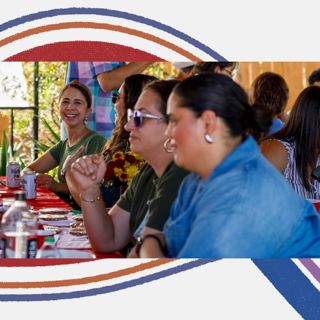
The Border Is a Top Campaign Issue. It’s Also Their Home.
This year, Democrats and Republicans are both fighting to convince voters that their party alone can fix what both parties say is a big problem: the Southern border.And public sentiment on the issue is shifting. According to Gallup, 55 percent of Americans want to curb immigration, the highest recorded total since 2001.With that in mind, we wanted to talk with people who actually live and work near the border. So we traveled to El Paso, with Jazmine Ulloa, a Times politics reporter who grew up there.On this week’s show, a conversation on the border about the border, and what people there make of the shifting politics in the battle over their backyard.On today’s episode:Jazmine Ulloa, a national politics reporter for The New York Times Subscribe today at nytimes.com/podcasts or on Apple Podcasts and Spotify. You can also subscribe via your favorite podcast app here https://www.nytimes.com/activate-access/audio?source=podcatcher. For more podcasts and narrated articles, download The New York Times app at nytimes.com/app.
26 Syys 202441min
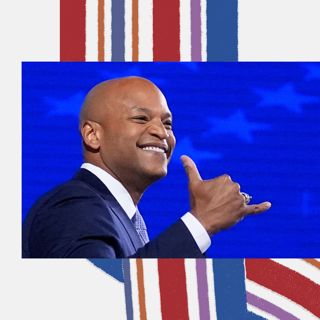
The Democrats’ Plan to Get Skeptics on Their Side
There’s a message that Kamala Harris and the Democrats are trying to send in these final weeks: The Democrats are patriots too.It was all over the place at the Democratic National Convention, in the chants of “U.S.A.!” that broke out on the convention floor, in the vice president’s speech and in a speech by Wes Moore, the governor of Maryland.This effort to reclaim patriotism can be seen as a way to reclaim more white rural voters. But it’s also an appeal to disaffected voters, especially some Black voters, who have lost faith in the system altogether.In this week’s “Run-Up,” how the Democrats are using love of country to try to reach the skeptics — the people torn on whether to vote at all. On today’s episode:Wes Moore, governor of MarylandPrentiss Haney, community organizer Subscribe today at nytimes.com/podcasts or on Apple Podcasts and Spotify. You can also subscribe via your favorite podcast app here https://www.nytimes.com/activate-access/audio?source=podcatcher. For more podcasts and narrated articles, download The New York Times app at nytimes.com/app.
19 Syys 202440min

What Undecided Voters Are Thinking
For the people still on the fence about 2024, Tuesday night’s debate was an important data point.How would Vice President Kamala Harris differentiate herself from President Biden? How would former President Donald Trump come across when facing a new opponent? Would this matchup, the first time these candidates met, be enough to help these undecided voters make a decision?On today’s “Run-Up,” we look at how they are thinking after the debate. Up first, we watch the debate with Corrie Zech, an undecided voter in Ohio.We initially met her back in June at a watch party for the first presidential debate. Listen to that episode here.Then we catch up with undecided voters we first talked to for this episode, ahead of the debate.Everyone tuned in Tuesday night. They said they’re closer to making a decision but, with less than two months to go, have yet to fully make up their minds. Subscribe today at nytimes.com/podcasts or on Apple Podcasts and Spotify. You can also subscribe via your favorite podcast app here https://www.nytimes.com/activate-access/audio?source=podcatcher. For more podcasts and narrated articles, download The New York Times app at nytimes.com/app.
12 Syys 202442min

The Stakes of a Harris vs. Trump Debate
Former President Donald Trump and Vice President Kamala Harris will face off in Philadelphia on Tuesday night for the second presidential debate of 2024. It will be the first time the two candidates meet on a debate stage.They enter the debate in a neck-and-neck race, with Mr. Trump leading Ms. Harris, 48 percent to 47 percent, according to the latest national polling from The New York Times and Siena College.That means the people still on the fence — those unsure about whom to vote for or whether to vote at all — are potentially the most important audience for the debate.Today, “The Run-Up” talks with Ruth Igielnik, a Times polling editor, about the 5 percent of voters who are still undecided. We then speak with four undecided voters to ask what they are hoping to hear tonight. Subscribe today at nytimes.com/podcasts or on Apple Podcasts and Spotify. You can also subscribe via your favorite podcast app here https://www.nytimes.com/activate-access/audio?source=podcatcher. For more podcasts and narrated articles, download The New York Times app at nytimes.com/app.
10 Syys 202418min







